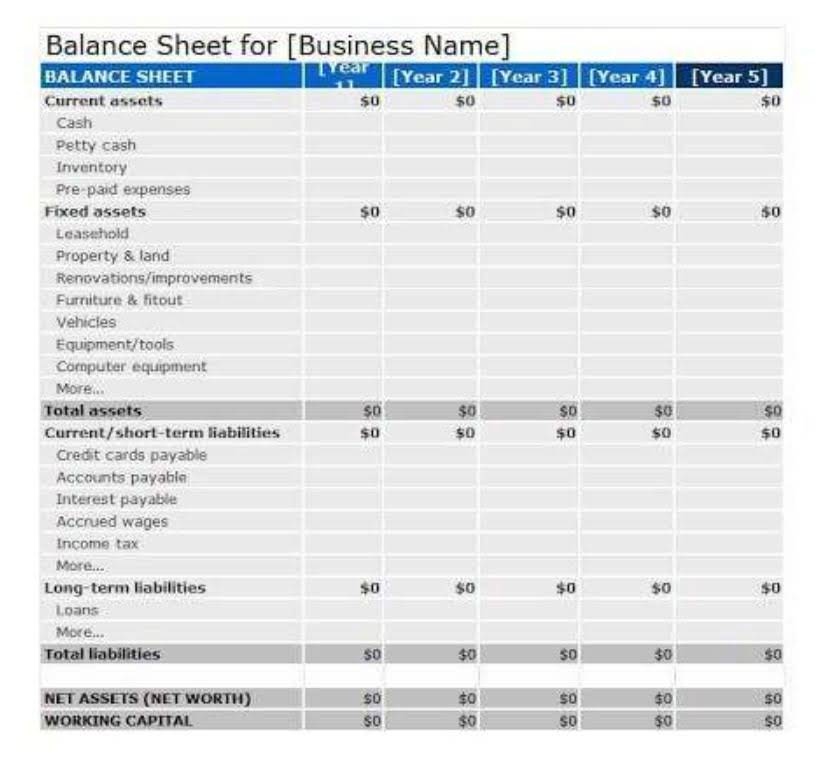Total: ₹300.00

The balance sheet is a financial https://www.bookstime.com/articles/purchases-journal statement that reports a company’s assets, liabilities, and equity at a specific point in time. The accounting principles used in preparing the balance sheet ensure that the assets and liabilities are reported at their fair market value. This means that the balance sheet provides a snapshot of the company’s financial position at a specific point in time. The principles of accounting are essential for businesses to maintain accurate financial records. They provide a framework for recording transactions, preparing financial statements, and communicating financial information to stakeholders. The principles also help businesses to ensure compliance with legal and regulatory requirements.
How Brex can simplify expense reporting
This separate reporting prevents the company from presenting a netted figure of $400,000, which could mislead stakeholders about the company’s stronger financial position. This principle helps to demonstrate the true picture of a business and ensure that a business is not window-dressed to deceive investors and other accounting information users. According to the principle of conservatism, accountants follow the rule “anticipate no profits, but provide for all possible losses”. Whenever risk is anticipated, a sufficient amount should be kept aside to create a provision.
- Consider the nature of your business expenses as a key indicator for when to prioritize this principle.
- The principle is a guiding light for accountants, emphasizing the importance of strict adherence to established accounting rules and regulations.
- Com is committed to providing world-class study guides that help professionals and students better understand a range of business principles and practices.
- Understanding these principles is essential for anyone involved in financial reporting, whether they are accountants, auditors, or financial analysts.
- The expense recognition principle has an impact on the timing of income taxes, since it impacts the recognition of profits.
- Under the Principle of Continuity, assets are valued assuming the business has the intent and ability to use them and generate income.
How does the Principle of Regularity function under GAAP?
This article explores the practical applications of expense recognition across various business contexts. We’ll examine the three primary methods companies use to time their expenses and compare them with alternative approaches. Through examples from retail, manufacturing, and service industries, you’ll see how proper expense timing affects quarterly reporting, tax planning, and management decisions.

Importance of Accounting Principles
- By enhancing the transparency, reliability, and relevance of financial reporting, it strengthens the credibility of financial statements.
- The accounting principles used in preparing the balance sheet ensure that the assets and liabilities are reported at their fair market value.
- These principles provide a framework for recording, classifying, and summarizing financial transactions, and they help ensure that financial statements are prepared in a consistent and transparent manner.
- A difference of just a few days in recording business expenses can dramatically change how profitable a company appears on paper.
There are several areas in accounting where alternatives are present, for example, straight-line vs written down value methods of depreciation, valuation of closing stock, etc. This principle requires accountants to be cautious when valuing assets and reporting earnings. While the basic principle involved with expense recognition is this may be prudent, it can also lead to an understatement of earnings, which can negatively impact a company’s stock price and shareholder value.
- Establishing cross-functional teams that include both financial and operational staff helps incorporate practical knowledge into accounting estimates.
- Under the accelerated depreciation methods, there is a higher depreciation expense in the early years than the straight-line method.
- Now, in this case, the income would only be recognized in the month of July and not in January as the legal obligation is made in July.
- By following these principles, businesses can ensure that their financial statements are reliable and accurate, which is crucial for maintaining the trust of their stakeholders.
- However, in situations of financial distress or imminent closure, assets may need to be revalued and liabilities reassessed.
- The goal is to provide a complete and transparent view of the company’s financial position and performance.
- By following the expense recognition principle, businesses can ensure a more accurate alignment of expenses with the revenues they generate, contributing to more transparent and reliable financial reporting.
An effective expense management cash flow process will help you identify and record all these numbers accurately. As explained above, the expense recognition principle works in tandem with the revenue recognition principle. Expenses that cannot be tied one-to-one with revenue earned fall under this category.
Determining which exchange rate to apply becomes particularly complex for long-term projects spanning multiple reporting periods. Businesses apply the expense recognition principle through three distinct methodologies, each appropriate for different types of costs and operational contexts. The choice of method significantly affects how financial performance appears in company statements. The Principle of Utmost Good Faith, often termed “Uberrimae Fidei” in the accounting profession, is a fundamental doctrine in the Generally Accepted Accounting Principles (GAAP). This principle is rooted in the belief that all parties involved in financial reporting – from accountants to company executives – act honestly and faithfully.

Managing Bad Debt Write-Offs in Financial Reporting

One of the key accounting principles is the principle of conservatism, which requires accountants to be cautious in their estimates and to err on the side of understating rather than overstating assets and income. This principle helps to ensure that financial statements are not overly optimistic and that investors and lenders are not misled. Companies must distinguish between costs requiring immediate recognition and those needing allocation over time. Immediate recognition applies to expenses with short-term benefits directly tied to specific revenue, such as sales commissions paid when a contract is signed. Systematic allocation applies to long-term assets like delivery trucks, where the expense is spread across the asset’s useful life through depreciation. Similarly, a large advertising campaign might be allocated over several quarters if its benefits extend across those periods.


